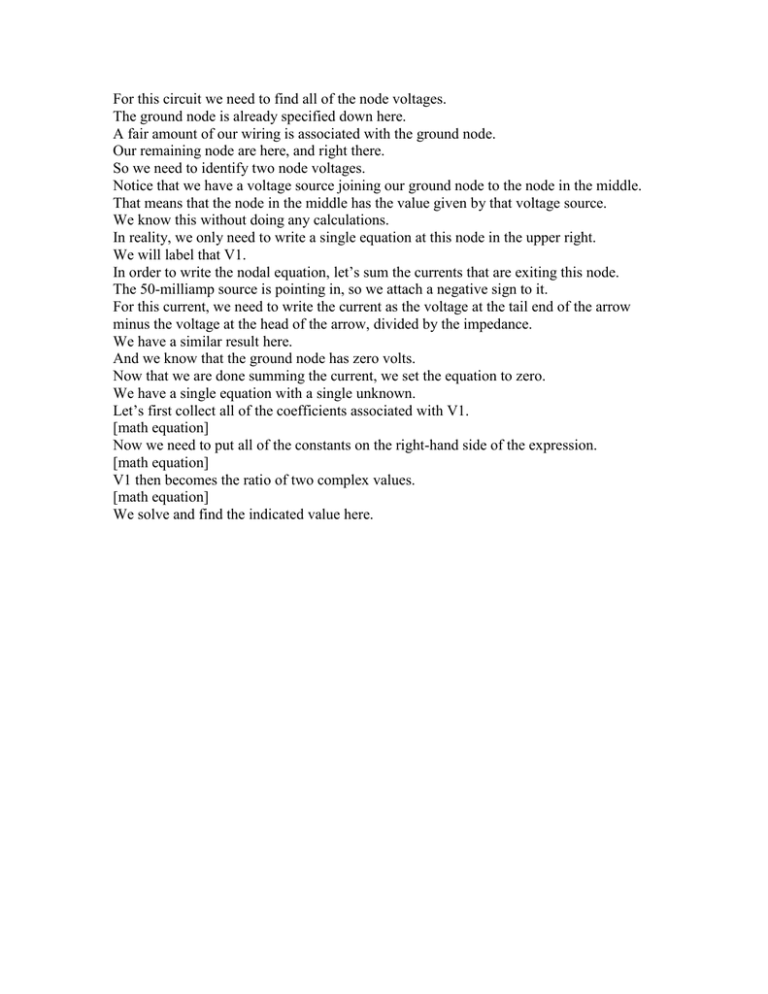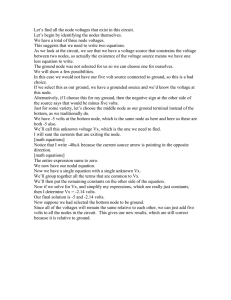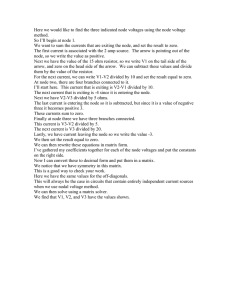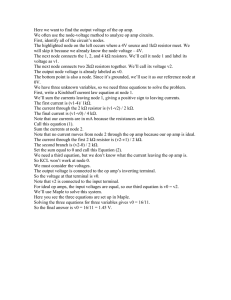For this circuit we need to find all of the... The ground node is already specified down here.
advertisement

For this circuit we need to find all of the node voltages. The ground node is already specified down here. A fair amount of our wiring is associated with the ground node. Our remaining node are here, and right there. So we need to identify two node voltages. Notice that we have a voltage source joining our ground node to the node in the middle. That means that the node in the middle has the value given by that voltage source. We know this without doing any calculations. In reality, we only need to write a single equation at this node in the upper right. We will label that V1. In order to write the nodal equation, let’s sum the currents that are exiting this node. The 50-milliamp source is pointing in, so we attach a negative sign to it. For this current, we need to write the current as the voltage at the tail end of the arrow minus the voltage at the head of the arrow, divided by the impedance. We have a similar result here. And we know that the ground node has zero volts. Now that we are done summing the current, we set the equation to zero. We have a single equation with a single unknown. Let’s first collect all of the coefficients associated with V1. [math equation] Now we need to put all of the constants on the right-hand side of the expression. [math equation] V1 then becomes the ratio of two complex values. [math equation] We solve and find the indicated value here.






